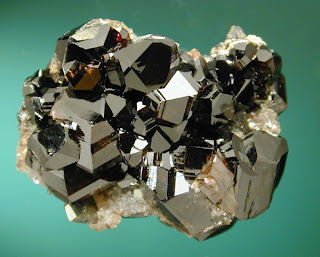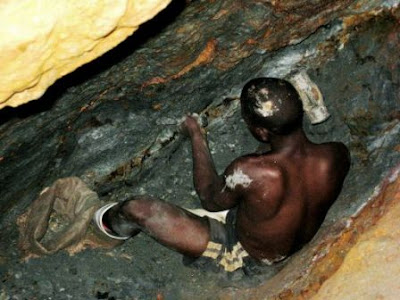Monday, 30 January 2012
HOW MANY DIE TO MAKE OUR GADGETS?

THE MINERALS




The Congo has mines that house so much of these minerals but unfortunately, the unstable country's government has lost full control of the mines a very long time ago. The militias that pretty much run the Congo and do as they please are the ones that run the mines and enforce slave labour to work at the mines. All the major manufactures including Apple, purchase all their minerals to use in their manufacturing process through middlemen and the money that is bought in from the sale of the minerals are used for more ammunition and weapons for the various militia. This issue has always been taking a backseat as the world looked at the amazing innovations that the tech companies were releasing but not questioning how these devices were being made.

Several laws have been attempted to curb the conflict mineral exporting. The law was first introduced in 2009 by an American senator and various laws have been attempted but most do not address the underlying issues of the conflict minerals or attempt to help stop the fighting altogether.

The Dodd-Frank Legislation is a part of the U.S. Government's Dodd-Frank Wall Street Reform Act, signed into law in July 2010, Section 1502 requires American companies to ensure the raw materials they use to make their products are not tied to the conflict in Congo, by auditing the mineral supply chains. But what are Due Diligence Guidelines?
The Organization for Economic Cooperation and Development's Due Diligence Guidance for Responsible Supply Chains of Minerals from Conflict-Affected and High-Risk Areas provides management recommendations for importers, processors, and consumers of Congolese minerals. These guidelines provide a practical roadmap for companies who want to keep conflict minerals out of their supply chains.
The Dodd-Frank Act’s provision, signed into law in July 2010, requires companies to trace and audit their supply chains in order to ensure their products are not financing atrocities occurring in eastern Congo. Through this legislation, the U.S. Government will lead the way to making due diligence in minerals supply chains mandatory.
The Dodd-Frank Act provides the commercial leverage to catalyze reform. The U.S. Government can use its convening power to bring together companies, regional governments, and NGOs to fix loopholes in the certification system, develop a monitoring system, and use diplomatic leverage to generate political will to implement it. The current law is designed to protect the tech companies themselves rather than the innocent Congolese people who are dying in awful conditions while they work in mines to gather the minerals that we need in our gadgets.

I am as guilty as everyone else in ignoring the issue and continuing to buy these gadgets and it doesn't look like things are going to change anytime soon. But we need to raise awareness regarding this issue. The companies need to know that we are fully aware of what is going on and need to see some change. It's hard to understand that the materials in our gadgets that we can't see are in our phones at the mercy of militia, killers and rapists back in the Congo. Yes, we are going to continue using new gadgets and computers for a very long time. But please remember, there are people out there, just normal human beings like you and me, that have died in order for the latest gadgets to be in our possession.
For more details please watch the video below. It will show you how bad things really are and how much we really rely on these poor folk to risk their lives on a daily basis to provide us with our gadgetry.
If you would like to help please visit the following organisations and show your support
Enough Project
ConflictMinerals.Org
Raise Hope For Congo
Email This BlogThis! Share to Twitter Share to Facebook
Copyright © 2012 Technically Funny | All Rights Reserved







0 comments:
Post a Comment